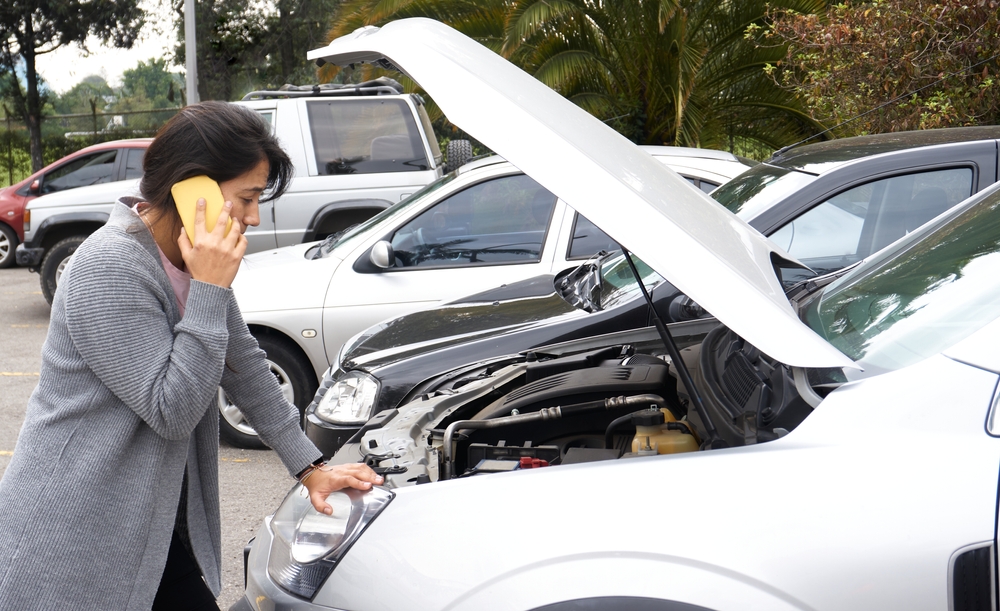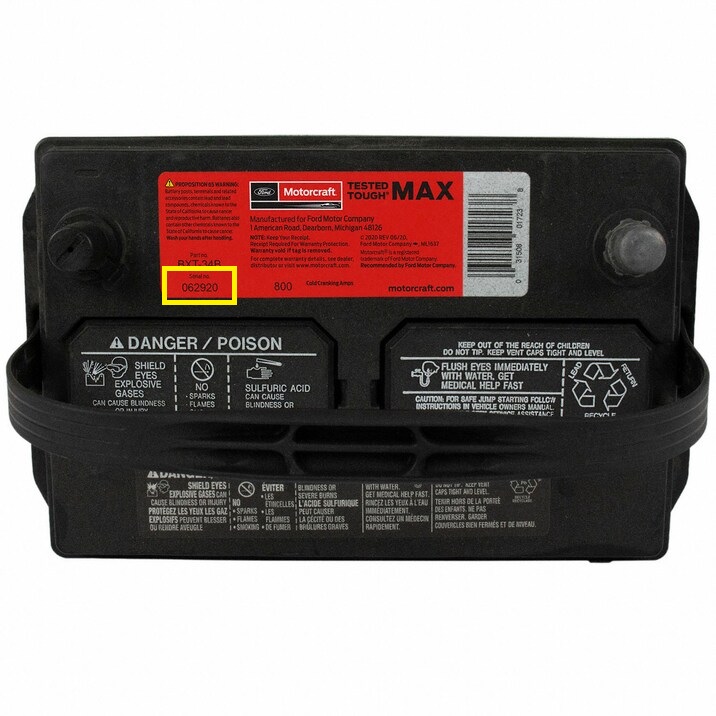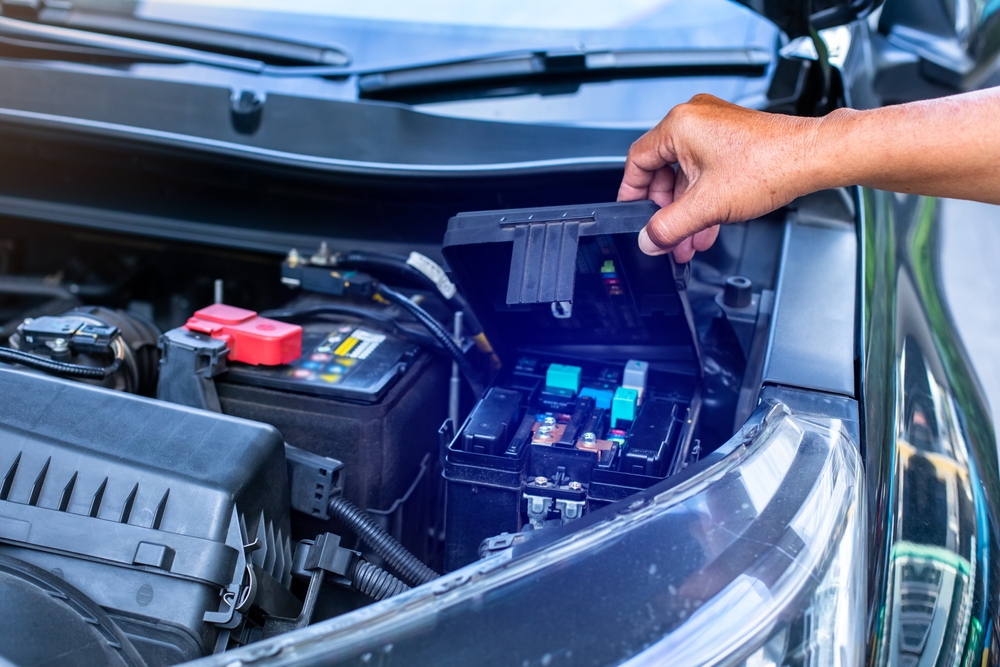Murfreesboro’s fall brings a subtle shift that most folks around here know well—mornings that dip from the pleasant 70s down into the low 50s and 40s by November. While our Tennessee autumns are milder than up north, that temperature drop is exactly when your Ford’s battery gets tested in ways it hasn’t been since last winter. You might not realize it, but a battery that starts your truck perfectly well on a warm September afternoon can suddenly struggle when you turn the key on a chilly morning heading to work or dropping the kids off at school. At Ford of Murfreesboro Service, we’ve seen it happen time and again—perfectly reliable Fords left stranded in driveways or parking lots simply because their owners didn’t know the warning signs were already there.
Why Fall Weather is the Real Test for Your Ford’s Battery
Here’s something that catches a lot of people off guard: your battery doesn’t actually die in the cold weather. It dies during the summer heat, but you don’t find out until fall arrives. When Murfreesboro temperatures climb into the high 80s and low 90s through July and August, the heat is silently degrading your battery’s internal components and evaporating the fluid inside. The battery keeps working fine because warm temperatures actually increase chemical reactions, making it easier to start your engine. But once October rolls around and those morning temperatures drop into the 50s—suddenly that weakened battery doesn’t have enough power to turn over your engine.
The science behind it is pretty straightforward: a battery loses about 35% of its strength at 32°F, and while Murfreesboro doesn’t regularly hit freezing in early fall, even the shift from 75°F to 50°F puts noticeable strain on a compromised battery. Meanwhile, your engine oil thickens in cooler weather, which means your starter motor needs even more power to get things moving. It’s a perfect storm—reduced battery capacity meeting increased power demand. According to the National Highway Traffic Safety Administration, cold weather significantly reduces battery power right when gasoline and diesel engines need more of it to start. So that battery that seemed totally fine during your drive to Nashville last weekend might leave you stranded on a cold Monday morning.
5 Signs Your Ford’s Battery Might Fail This Fall
Recognizing the warning signs early can save you from getting stuck in your driveway before heading to Stones River Mall or finding yourself stranded after a game at Tennessee Miller Coliseum. Here are the tell-tale signs that your Ford’s battery is on its way out:
Slow Engine Crank: When you turn the key or press the start button, does your engine hesitate or crank more slowly than usual? That sluggish “rr-rr-rr-rr” sound instead of a quick “vroom” is your battery telling you it’s struggling. This is especially noticeable on cooler mornings.
Dashboard Warning Lights: If your battery or check engine light illuminates, don’t ignore it. Modern Fords have sophisticated monitoring systems that detect when voltage drops below optimal levels, giving you advance notice before you’re left without a way to start your vehicle.
Electrical Issues: Dimming headlights, flickering interior lights, or power windows that move slower than they used to all point to electrical system problems. Your battery might not be supplying enough consistent power to all your Ford’s components.
Corrosion on Battery Terminals: Pop your hood and take a quick look. If you see white, ashy deposits or blue-green crusty buildup around your battery terminals, that corrosion is interfering with the electrical connection and making your battery work harder than it should.
Battery Age Over Three Years: If you can’t remember when you last replaced your battery, or if it’s been three years or more, it’s living on borrowed time. Most batteries last between three to five years, but Tennessee’s hot summers accelerate that timeline considerably.
Your At-Home Electrical System Checklist
You don’t need to be a mechanic to spot potential problems with your Ford’s electrical system. Taking just ten minutes to do these simple checks can give you valuable peace of mind and help you catch issues before they leave you stranded:
- Visual Battery Inspection: Open your hood and look at your battery. Check for any cracks in the case, bulging sides, or leaking fluid. These are signs of internal damage that mean your battery needs immediate replacement.
- Test Your Lights: Turn on your headlights with the engine off, then start your vehicle. If the headlights brighten noticeably when the engine starts, your battery might be weak. Also check all exterior lights—brake lights, turn signals, and reverse lights—to make sure everything’s working properly.
- Listen for Unusual Sounds: Pay attention when you start your Ford. Clicking sounds, grinding, or whirring noises can indicate starter problems or insufficient battery power.
- Check Electrical Accessories: Test your power windows, radio, air conditioning, and heated seats. If any of these seem slower or weaker than normal, your electrical system might not be getting adequate power.
- Inspect Cables and Connections: Look at the battery cables where they connect to the terminals. They should be tight and secure with no excessive corrosion. Loose connections cause all sorts of electrical gremlins that can be hard to diagnose later.
Inspecting Your Ford’s Battery: What to Look For
When you’re checking your battery, you’re looking for specific things that indicate its health and remaining lifespan. Start by safely securing your Ford and making sure the engine is off and cool. Locate your battery—in most Fords, it’s under the hood, but some models like certain Mustang Mach-Es have it in the trunk or under a seat.
Look at the manufacturing date code stamped on your battery case. It typically shows a letter and number—the letter represents the month (A for January, B for February, and so on) and the number represents the year. If your battery was manufactured more than three years ago, consider scheduling a complimentary battery check at our service center. Check the battery terminals for any corrosion, which looks like white, blue, or green crusty deposits. Even minor corrosion reduces your battery’s efficiency and should be cleaned off properly. Look at the battery case itself for any cracks, bulges, or signs of leaking—any of these mean you need a replacement right away, not later.
Also check the battery hold-down bracket that keeps it secured. If your battery can move or shift, the vibration from driving can damage internal components and dramatically shorten its life. Tennessee’s roads can be rough in spots, especially around construction zones on I-24 or Old Fort Parkway, so that secure connection matters more than you might think.
Beyond the Battery: Checking Lights, Fuses, and Alternator
Your battery doesn’t work alone—it’s part of a complete electrical system that includes your alternator, starter, and fuses. The alternator is particularly important because it recharges your battery while you drive and powers your electrical systems when the engine is running. A failing alternator won’t keep your battery charged, which means even a brand-new battery will go dead.
Here’s an easy alternator test: Start your Ford and turn on multiple electrical accessories—headlights, radio, air conditioning, and heated seats if you have them. If your headlights dim significantly when you add more accessories, your alternator might not be producing enough power. You can also check your dashboard—most Fords have a battery icon that illuminates if the alternator isn’t charging properly. That warning light isn’t actually about your battery; it’s telling you the charging system has a problem.
Fuses are your electrical system’s safety mechanism, protecting circuits from power surges. If certain electrical components stop working—like your radio, power windows, or dashboard lights—a blown fuse might be the culprit rather than a battery issue. Your owner’s manual shows you where the fuse boxes are located and which fuse controls each circuit, making it easy to visually inspect for blown fuses and replace them if needed.
| Common Electrical Problem | Likely Cause | What It Means for You |
|---|---|---|
| Engine won’t crank at all | Dead battery or corroded terminals | You need a jump start or battery replacement to get going again |
| Engine cranks slowly | Weak battery or starter issue | Battery is likely failing and should be tested immediately |
| Battery dies repeatedly | Failing alternator or parasitic drain | Even a new battery won’t solve this—you need professional diagnosis |
| Lights dim when idling | Weak alternator output | Your charging system needs attention before you’re stranded |
| Electrical accessories don’t work | Blown fuse or wiring issue | Usually an easy fix, but needs proper diagnosis to prevent future problems |
The Ford-Certified Difference: What Our Murfreesboro Techs Check
When you bring your Ford to our service center for a fall electrical check, you’re getting a lot more than just someone looking at your battery. Our Ford-certified technicians use advanced diagnostic equipment specifically designed for your Ford’s systems, which gives us insights that generic code readers simply can’t provide. We start with a complete battery load test that measures not just the voltage, but also the cold cranking amps and reserve capacity—these numbers tell us exactly how much life your battery has left and whether it’ll make it through winter.
We test your alternator’s output to verify it’s charging correctly across the entire RPM range, not just at idle. We check for parasitic draws—those sneaky electrical drains that slowly kill your battery when the vehicle is off. Sometimes it’s as simple as a glove box light that doesn’t shut off properly, but finding these issues requires the right tools and expertise. We inspect every cable, connection, and ground point in your electrical system because a loose connection on one ground wire can cause bizarre electrical problems that seem impossible to diagnose.
For newer Fords with start-stop technology, we check the auxiliary battery and make sure the system is functioning as designed. We also inspect your starter, which works hand-in-hand with your battery, and we check all fuses and relays. The best part? We give you a complete report with actual numbers and measurements, not just vague recommendations. You’ll know exactly where your battery stands and whether you should replace it now or if you’re good for another season. If you need to schedule your service appointment, we make it easy with convenient online booking.
Special Considerations for Ford Hybrids and EVs (like the Mustang Mach-E)
If you’re driving a Ford hybrid like the Escape Hybrid or Maverick Hybrid, or a fully electric vehicle like the Mustang Mach-E or F-150 Lightning, your fall preparation looks a little different. These vehicles have two distinct battery systems: the traditional 12-volt battery that powers accessories and the high-voltage battery pack that propels the vehicle. Both need attention, but they require different types of care.
The 12-volt battery in your hybrid or EV still follows the same seasonal rules—summer heat weakens it, and fall cold tests it. This battery powers your vehicle’s computers, locks, lights, and even initiates the high-voltage system. If your 12-volt battery dies, your EV won’t move despite having a fully charged main battery pack. We see this fairly regularly, and it catches owners by surprise because they assume their electric vehicle doesn’t have traditional battery concerns.
The high-voltage EV battery is more resilient to temperature changes, though extreme heat or cold can temporarily reduce your driving range. Ford designs these batteries with sophisticated thermal management systems, but it’s still smart to have the system checked during your fall service appointment. We verify that the battery management system is functioning correctly, check for any error codes, and make sure the cooling system for the high-voltage battery is working as designed. For detailed maintenance for your Ford EV, our technicians have specialized training on these advanced systems.
According to the National Highway Traffic Safety Administration, proper battery maintenance for electric vehicles is crucial for safety and longevity. Regular checks help detect potential issues early, ensuring your EV remains safe and reliable through every season.
Don’t Get Stranded: Schedule Your Fall Electrical Check Today
Fall is genuinely the perfect time to address battery and electrical issues—after the stress of summer heat but before winter cold makes the problems urgent. The difference between catching a weak battery in October versus getting stranded in December is huge, both in terms of convenience and your safety. Imagine getting stuck in the parking lot at Stones River Mall during holiday shopping, or having your Ford refuse to start when you’re trying to get to work on a Monday morning. These scenarios are completely avoidable with simple preventive maintenance.
Here in Murfreesboro, we’re fortunate not to deal with the extreme cold that northern states face, but that doesn’t mean we should skip seasonal preparation. Even our relatively mild winters can expose hidden weaknesses in aging batteries and electrical systems. Plus, getting your Ford checked now means you’re ready for those occasional trips to visit family in colder parts of the state or even further north during the holidays. Don’t wait for the first cold snap to discover your battery is on its last legs—by then, you’re already dealing with an emergency rather than a planned service appointment.
Don’t wait for the first cold snap. A weak battery shows no symptoms in warm weather—it fails when you need it most. Ford of Murfreesboro Service offers a complimentary battery check to give you peace of mind this fall. Our Ford-certified technicians will test your battery, inspect your electrical system, and ensure your Ford is ready for the season. Take advantage of our convenient service options to get your free check today!
Frequently Asked Questions About Ford Battery Health
Q: What are the warning signs of a dying car battery?
A: The most common warning signs include slow engine cranking, dimming headlights, dashboard warning lights, electrical accessories that work intermittently, and visible corrosion on battery terminals. If your Ford hesitates even slightly when starting, especially on cooler mornings, it’s time to get your battery tested.
Q: How long does a genuine Ford Motorcraft battery last?
A: Most Motorcraft batteries last between three to five years, but Tennessee’s hot summers can accelerate wear and reduce that lifespan. The actual life depends on factors like driving habits, climate exposure, and how well the battery is maintained. Generally, if your battery is over three years old, you should have it tested annually.
Q: Why does my battery always seem to die in the cold and not the summer?
A: This is one of the most common misconceptions about batteries. Heat actually does the damage during summer by evaporating battery fluid and degrading internal components, but the battery keeps working because warm temperatures increase chemical reactions. When fall temperatures drop, that weakened battery suddenly can’t deliver the power needed to start your engine, so it fails in the cold even though the damage happened months earlier.
Q: Can I check my Ford’s battery myself, or do I need a technician?
A: You can definitely do a visual inspection yourself—checking for corrosion, cracks, and loose connections. However, a proper battery test requires specialized equipment that measures cold cranking amps and reserve capacity. These numbers tell you the battery’s actual health, not just whether it’s working right now. Our complimentary battery check gives you those precise measurements so you can make informed decisions.
Q: Is my Ford’s battery covered under my new car warranty?
A: Ford’s New Vehicle Limited Warranty covers the original battery for 3 years or 36,000 miles from the warranty start date, whichever comes first. However, batteries are considered wear items, so replacement might not be covered if the battery fails due to normal aging or if it’s outside the warranty period. It’s always best to check your specific warranty documentation.
Q: What’s included in a professional battery and electrical system check?
A: A comprehensive check includes testing the battery’s voltage, cold cranking amps, and reserve capacity using professional load testers. We also test the alternator’s charging output, inspect all cables and connections for corrosion or damage, check for parasitic drains that kill batteries overnight, test the starter, and verify that all fuses and relays are functioning properly. You’ll get a complete report with actual measurements, not just a pass-fail grade.
Schedule Your Fall Electrical Check Today
Don’t let a failing battery ruin your morning commute or leave you stranded around Murfreesboro and Middle Tennessee. The factory-trained experts at Ford of Murfreesboro Service are here to ensure your electrical system is ready for cooler weather, whether you drive a brand-new Ford F-150 or a trusted Escape that’s been serving you reliably for years. We have the right diagnostic tools, genuine Motorcraft parts, and specialized knowledge to handle any battery or electrical issue efficiently and effectively.
With Murfreesboro’s fall temperatures dropping from the pleasant 70s into the low 50s and 40s by November, waiting to address battery problems only makes the situation worse and potentially leaves you stranded when you need your Ford most. Our comprehensive diagnostic approach identifies exactly what your system needs, ensuring you get appropriate service that solves the problem rather than just temporary fixes that fail on the coldest morning of the year.
Or visit us at Ford of Murfreesboro Service Center at 1550 NW Broad Street, Murfreesboro, TN, 37129, and let our certified technicians ensure your Ford is prepared for the season ahead.





